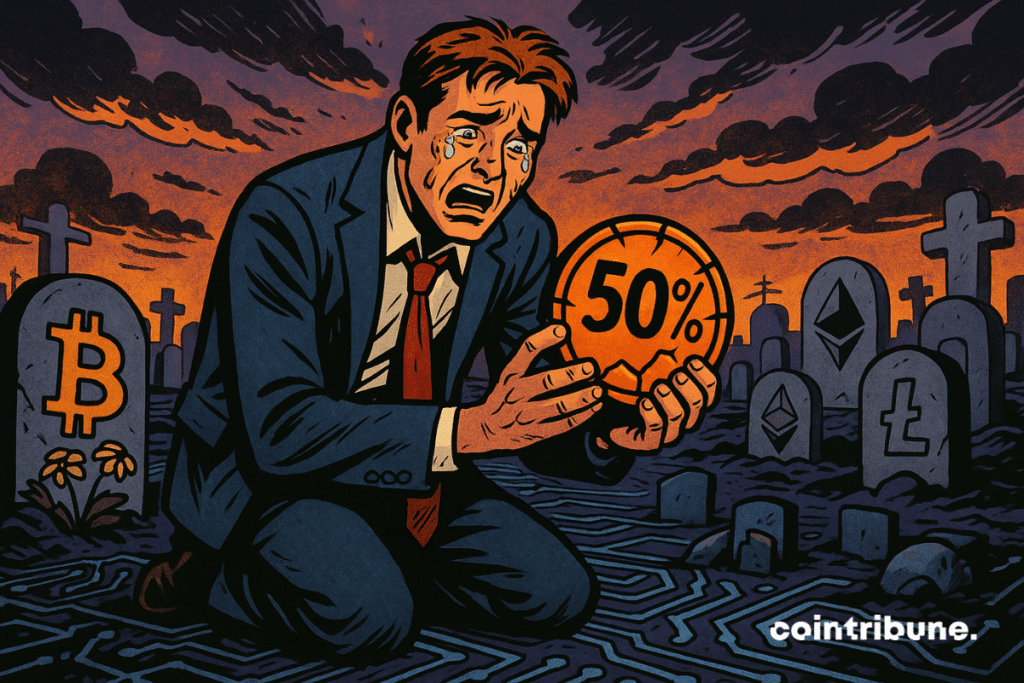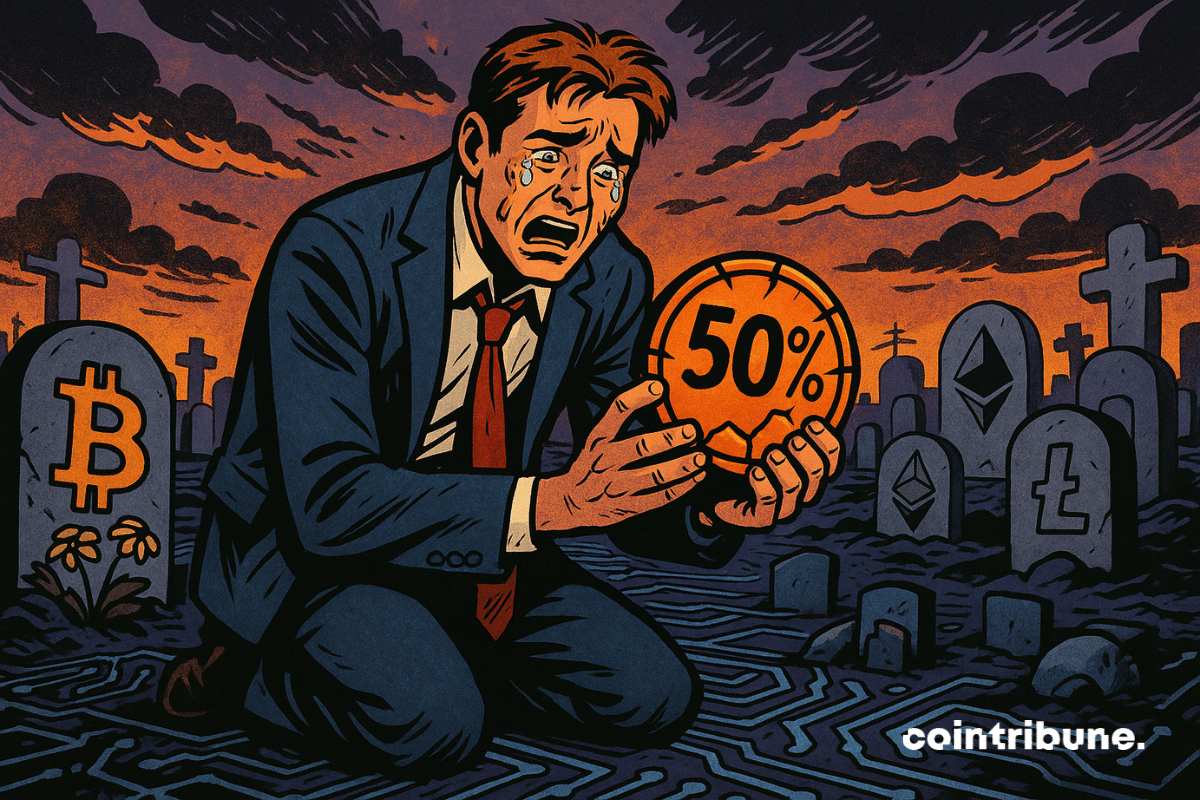The crypto world passes through an unprecedented crisis with more than half of the digital chips that have ceased to have all activities. According to Geckoterminal, almost 7 million cryptocurrency cryptocurrencies have failed approximately 3.7 million from 2021, an alarming rate of failure of 52.7 %.

In short
- More than 3.7 million cryptos will stop exchanges since 2021.
- The first quarter of 2025 concentrates almost 50% of all recorded failures.
- Starting the Pump.Fun platform contributed to the explosion in the number of projects.
- Only 1% of the same formed on the pump.Fun can survive.
3.7 million projects are missing in four years
How much has Kryptos actually died in recent years? According to the geckoterminal data of nearly 7 million cryptocurrencies listed since 2021, approximately 3.7 million ceased its stock exchange and is considered bankrupt, which is a failure of 52.7 %.
This trend was dramatically accelerated between 2024 and early 2025, with a specific concentration in the first quarter of 2025. This critical period coincided with the inauguration of Donald Trump in January, followed by a remarkable slowdown of the cryptocurrency market.
The explosion in the number of projects shows a radical change in the ecosystem. In 2021 there were only 428,383 gekoterminal projects. In 2025, this number reached almost 7 million or multiplication by 16 in four years.
This exponential growth is widely explained by the arrival of platforms such as the pump. Fun that democratized the creation of chips.
These tools have allowed everyone to launch their own crypto without technical knowledge as a result of flooding the market for the same and low -basic projects.
2025, Dark Year for Cryptos
The first quarter of 2025 set a catastrophic record with 1.8 million crypto projects that ceased all activities. This number represents almost half (49.7 %) of all disorders recorded between 2021 and 2025.
The year 2024 has already demonstrated disturbing features with 1.4 million stuck projects (37.7 % of total bankruptcy). Paradoxically, more than 3 million new crypts were born in the same year, illustrating extreme volatility in this industry.
The situation was very different before. Between 2021 and 2023, the failure remained limited to less than 250,000 projects per year.
This recent explosion is widely explained by the formation of platforms that drastically simplified the creation of chips. Pump.Fun is a perfect example: this platform caused the same wave and projects without the actual value.
Even at its peak in November 2024, the level of chip survival only reached 1.67 %. Since then, this rate has fallen below 1 % for four consecutive weeks, reflecting the increasing lack of investors for these speculative assets.
This massive hecatombe Kryptos emphasizes the importance of strict analysis before any investment in this volatile sector. While thousands of projects disappear each month, investors gradually prefer digital assets set at the expense of ephemeral high -risk tokens.
Maximize your Cointribne experience with our “Read to Earn” program! For each article you read, get points and approach exclusive rewards. Sign up now and start to accumulate benefits.
Passionate Bitcoin, I like to explore meanders blockchain and cryptos and share my discoveries with the community. My dream is to live in a world where privacy and financial freedom is guaranteed for everyone, and I firmly believe that Bitcoin is a tool that can make it possible.
Renunciation
The words and opinions expressed in this article are involved only by their author and should not be considered investment counseling. Do your own research before any investment decision.







